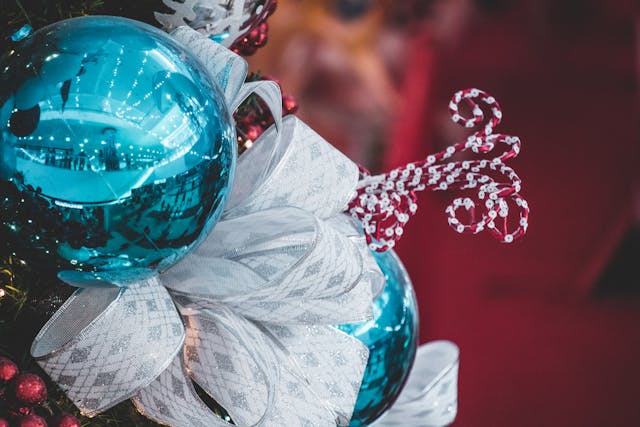The History of Tree Skirts
Tree skirts have become an essential part of Christmas decorations, but their history dates back to the Victorian era. Evergreen trees became famous as a symbol of everlasting life during this time. Family members would gather around the tree, sing carols, and exchange gifts to enhance its beauty. However, the underside of the tree would often show exposed wires and stands, which detracted from the tree’s overall beauty.
This is how the tree skirt came into existence, as it served as a decorative cover for hiding the unsightly aspects of the 8 ft Christmas tree. The Victorian era also saw the importance of symbolism in art and fashion, and the tree skirt was no exception. The design of tree skirts reflected the period’s aesthetics, with intricate lace, ruffles, and embroidery being popular styles.
The Significance of Tree Skirts

Today, tree skirts serve as an essential symbol in Christmas decorations, particularly in church decor. The 8 ft Christmas tree represents life and growth, where the roots are firmly planted in the ground, and the branches reach outwards towards the heavens. In Christianity, many symbols relate to the story of Jesus, Mary, and the Holy Ghost. Tree skirts are an essential symbol for representing these symbols.
In the Bible, trees are used in biblical stories to depict life, knowledge, and power. The presence of a tree skirt around the Christmas tree symbolizes the presence of Jesus. The red and green colors in tree skirts represent the blood of Christ and eternal life, respectively. The ruffles and embroidery found in tree skirts symbolize the purity, hope, and joy of Mary.
The Holy Ghost is represented by the 8 ft Christmas tree with leaves or branches that blow with the wind. This symbolism signifies the power of the Holy Ghost to move and inspire people. The presence of the Holy Ghost is further emphasized by the use of lights, tinsel, and ornaments as they depict the light and splendor of heaven.
In addition, tree skirts are used in church decor to signify the presence of Jesus in the house of the Lord. During Christmas, the church decorates the altar with evergreen trees to symbolize the eternal life of Jesus and the presence of the Holy Ghost in the church. The tree skirt, in this case, signifies the purity and holiness of the church.
Conclusion:
In conclusion, tree skirts have played an important role in Christmas decorations since their invention. They represent the presence of Jesus, Mary, and the Holy Ghost in our homes and the church. The different designs and colors used in tree skirts symbolize the biblical stories and depictions related to the birth of Christ, which is the central story of Christmas. In essence, tree skirts are not just decorative pieces but also represent our faith and belief in the story of Jesus.